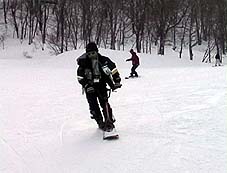Customer : How many kanjis are there?
A lot often people ask that to me, it's perhaps like F.A.Q :-)
I usually answer that....
Even my tiny kanji dictionary has roughly 7,000 kanjis in it, so I guess perhaps more than 10,000. In my school days, we started learning 3 kanjis a day when we
were at the 3rd grade in elementary school. We had kanji examination every week
for the kanjis we had learned at the previous week. They say if we knew 1,000 kanjis, somehow we can survive in Japan, if we knew 2,000, we can read newspaper with no problems.
When I answer like above, most people are surprised with it.
Customer : Too many!!!! What if you found any kanjis you don't know?
Me: I need to see a kanji dictionary
Customer : How do you find the kanji if there were more than 10,000?
Me : Many kanjis are constituted by some parts like them in this mugcup below.
Kanjis in this mugcup are all fish related ones, they all have the kanji for "fish" at the left side. This "left" thingy in a kanji is what we call "Hen". If it's at the right side, we call it "Tsukuri". And they ( hen and tsukuri ) are both "Bushu" ( part of kanji ). The kanji fish has 11 strokes, so we need to see the 11 stroke kanji groups in a dictionary to find the "fish" hen. When we find the fish-hen, we need to check how many strokes the exact kanji has totally. If it's a fish related kanji, it must be more than 11 strokes because fish has already had 11. A kanji dictionary usually lists fewer strokes kanjis first, then more strokes kanjis later.
So if there's totally a 14 strokes fish related kanji, it could be listed earlier than 15 strokes fish related kanji.
When I complete to explain this and that like this, most people seem to have headache lol.....
Customer : How do you use the 3 kind of alphabet (Kanji, hiragana and katakana) differently?
Me : We use all the 3 mixed in a line!
Customer : What? How confusing it is, it's easier to describe a sentence only with hiragana, isn't it?
Me : Exactly yes and it's the best way if one were an elementary school kid who has never learn kanji yet. But once if you started learning kanjis, it's easier for you to understand what the senteces say when they include kanjis as well as hiragana because kanjis are ideograms, you can easily imagine what each and every kanji ( or kanji combinations ) say. If it's all described only with hiragana, you have to judge what "Hashi" exactly means for example by judging it from the context. Hashi could be "edge", "chopstick" or "bridge" in Japanese. If they were described in kanji, much easier for us to specify them because different kanji is applied to each.
Customer : Hum....
I guess perhaps this might be tough to understand for those who don't use ideograms as the main alphabet of their mother tongue. I also have a lot hard time to "write" some complicated kanjis even if I can read them.
Hayaokidori website


No comments:
Post a Comment